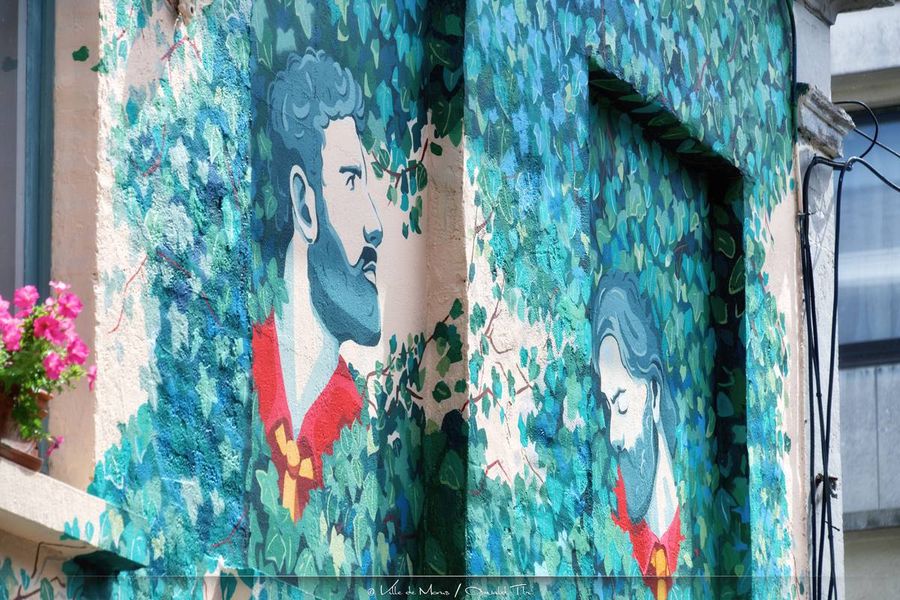Balloons taking flight / 10th Arte
Rue de l’Athénée, 3 - 7000 Mons
 Ville de Mons_Oswald Tlr.
Ville de Mons_Oswald Tlr. Ville de Mons_Oswald Tlr.
Ville de Mons_Oswald Tlr.10eme Arte is a duo of young women working in Brussels, one Spanish, Almudena Pano, the other Italian, Elisa Sartori. Elisa Sartori is a woman with a rich multicultural background. Born in Italy, at the age of six her father decided to take the whole family to Africa. When she was nineteen, she returned to Italy and moved to Venice to study Decorative Arts at the Academy of Fine Arts. ‘I realised that it's very important for me to tell stories to make reality more amusing and charming. For example, I prefer to tell you that my father is Indiana Jones, when in reality he's just a geologist.’ She has now been living in Brussels for several years, where she enjoys writing children's books, giving art workshops and publishing illustrations for newspapers. She is a secondary school teacher. ‘10emeArte is a project that gives me the opportunity to develop my illustrations in my own way and to collaborate with my very good friend Almudena’. Almudena Pano was born in a small village in the heart of the Pyrenees. She trained in Advertising and Public Relations at Madrid's Complutense University, and soon found herself faced with a ‘major moral problem’ in the world of advertising, she says. My values drive me to want to touch people, to make them laugh and think, and I didn't want to contribute to building a world that was so superficial in my eyes’. Today, she lives in Brussels and is an author and illustrator of children's books and comic strips. ‘10emeArte is a project that allows me to create projects with a different approach to the space, the audience and the purpose of the image... and, of course, to work with my soul mate Elisa’. These two women form a collective of artists firmly rooted in our world, speaking a children's language that touches adults just as much.
Montois folklore was a complete discovery for these two young women, who were particularly impressed by the fervour of the audience, who were the real actors in the Lumeçon fight. Only the amassed faces are presented here in their motley diversity of style, age and gender. But what is even more striking about this performance is the way in which the audience and the fighters are united in the same lively, enthusiastic fervour. The fresco is completed by the second section above, which shows balloons taking to the skies, looking strangely similar to the crowds gathered on the ground - a symbol of freedom and lightness. The fresco symbolises the enthusiasm of the Montois audience, and in particular the momentous event of the balloons taking to the skies after the dragon's tail swished as he arrived in the Grand-Place. The procession of actors and dragon follows a very precise route: The procession starts from the collegiate church of Sainte-Waudru and heads down the rue des Clercs to the Grand-Place. During this journey, the dragon will give three strokes of its tail, one of which must release a bouquet of multicoloured helium-filled balloons. This is a late addition to the parade scenario, dating from the end of the Second World War. The multi-coloured balloons taking to the skies create an emotional moment, just before the dragon begins its long journey through the jubilant crowd gathered on the Grand-Place; the balloons taking to the skies represent a positive sign of freedom...
L'art habite la Ville













-min-900x601.jpg)










